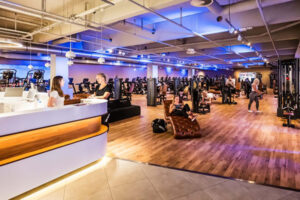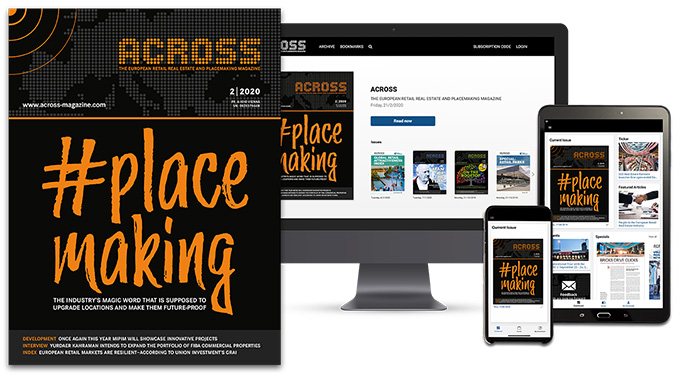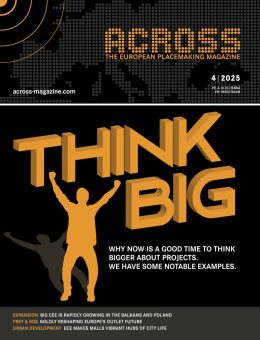By Mark Bruce
The ongoing polarisation poses critical questions about the future of retail and the sustainability of traditional store locations. It is a forcing function to rethink retail strategies and the function and form of physical spaces. Ultimately it poses the question: how much polarisation can a location withstand – and what does that mean for space planning and utilisation?
The shift hasn’t happened in a vacuum. A complex blend of social, economic, technological and lifestyle factors has accelerated the pace of change. Income equality has grown more pronounced, creating an expanded divide between high earners and those who are more financially constrained. This is clearly reflected in consumer behaviour – with some shoppers opting for luxury purchases, whilst others focus on affordability. Economic uncertainty, driven by inflation, geopolitical instability, and fluctuating consumer confidence is reinforcing this duality.
Technology and AI are transforming how people shop. Sophisticated personalisation algorithms allow premium brands to curate highly exclusive experiences, while budget retailers use automation to drive efficiency and keep pricing low. Social media, particularly among younger generations, has become the primary discovery tool for new products and brands, displacing traditional channels. Layered onto this is a profound change in lifestyle patterns following the COVID-19 pandemic. As more people enjoy flexible schedules, shopping habits have adapted. Consumers are blending longer, destination-style outings with frequent local top-ups, often relying on home delivery services to fill in the gaps.
The impact on retail real estate
A growing number of legacy household brands have failed as shoppers continue to make clearer, more informed purchase decisions. The result has been a concentration of the retail market, with fewer brands dominating and many opting for more strategic locations over high quantity. This creates a challenge for asset owners and operators as competitive tension for space declines and shoppers increasingly choose either a premium out-of-town shopping destination or a local retail park for convenience.
Out-of-town, premium destinations attract less frequent visits but deliver a day out experience driving increased dwell times and average spend. As retail brands shift their property strategy to quality over quantity, this means that the premium destinations have become more attractive to premium brands and less so for value operators.
Retail parks have performed well over the past few years as they continue to offer convenience and focus heavily on general merchandise, which is less impacted by the growth of online. As more shoppers work from home brand loyalty becomes an important factor. This has supported retail park locations to attract strong visitor numbers, albeit with a lower dwell and average spend compared to out-of-town locations. In essence, this provides value retailers with an opportunity to acquire larger footprints at a lower cost, protecting margins and maintaining lower price points for shoppers.
The squeeze in the middle
The biggest casualty in this polarised landscape is mid-market retailers. As it slowly erodes it creates an additional threat to mid-market retail locations. Locations that offer neither convenience nor destination struggle to provide the right space and demographics for brands.
As a result, they are becoming increasingly unattractive to brands that are now more selective and data-informed than ever before. The consequence is not just a decline in retail presence, but a broader erosion of foot traffic, vibrancy, and long-term viability. Essentially, we continue to see a decrease in rental values and increase in void rates in these mid-market locations.
Rethinking the mid-market strategy – grasping the opportunity
Despite the difficulty facing the mid-market, this polarising shift in fact presents an opportunity. The opportunity is there for those willing to move out of the data darkness. As brands become more selective, better informed, and data-driven, it’s vital that the real estate industry adopts a similar strategy. The tools to access game changing data insights are now available for owners and operators, to make better, more informed leasing decisions. At Kinexio we are pleased to have launched a data platform capable of enabling retail owners and operators to understand their sales and footfall, make strategic leasing decisions, and understand their performance of their property.
Mid-market retail spaces must reimagine their purpose. It is possible that retail alone may not be enough. Instead, these locations can be revitalised by becoming mixed-use environments that blend shopping with social, community, and workplace functions to reignite interest and visitation. It is imperative that retail and real estate operators alike embrace a more strategic, evidence-based approach, using real time data to guide leasing, design and marketing decisions. To do this they must understand who the customers are, where they’re coming from, the brands they engage with, and when they shop. This insight can further inform everything from tenant mix and opening hours to new service offerings.
In recent years, some of the most successful retail brands have thrived not by expanding blindly, but by being laser-focused, data-driven, and operationally efficient. The commercial real estate sector can — and must — take a page from that playbook. Whilst there is a common rhetoric about the industry being slow to adapt, I believe that is changing – at pace. It’s changing out of necessity, and out of an understanding that there is now easy access to the tools needed to make those changes.
Embracing Change Through Data and Collaboration
Change is uncomfortable, especially in an industry where long-term success has often been built on stability and repetition. But doing nothing is no longer an option. Collecting and leveraging footfall data, understanding shopping patterns, identifying gaps and threats — all of these are crucial to reshaping underperforming locations. Whether it’s enhancing the evening economy, consolidating operating hours, or introducing new service lines, data unlocks the insight needed to make decisions with confidence. Equally important is fostering collaboration. Transforming a location isn’t a one-sided effort. It requires working closely with tenants and the community. Sharing insights with tenants and involving them in strategy can build the trust and alignment necessary for meaningful change.
The Middle Ground Isn’t Dead — But It Must Evolve
The middle ground in retail may be shrinking, but it’s not obsolete. There is still a role and a huge opportunity for well-positioned, thoughtfully designed mid-market spaces — but only if they adapt to the new realities of consumer behaviour and market dynamics. By embracing innovation, adopting a data-led mindset, and focusing on relevance over tradition, the commercial real estate sector can transform these spaces from relics of a fading era into vibrant hubs of community, commerce, and connection.

Mark Bruce
Mark Bruce is Data and Insights Director at Kinexio







